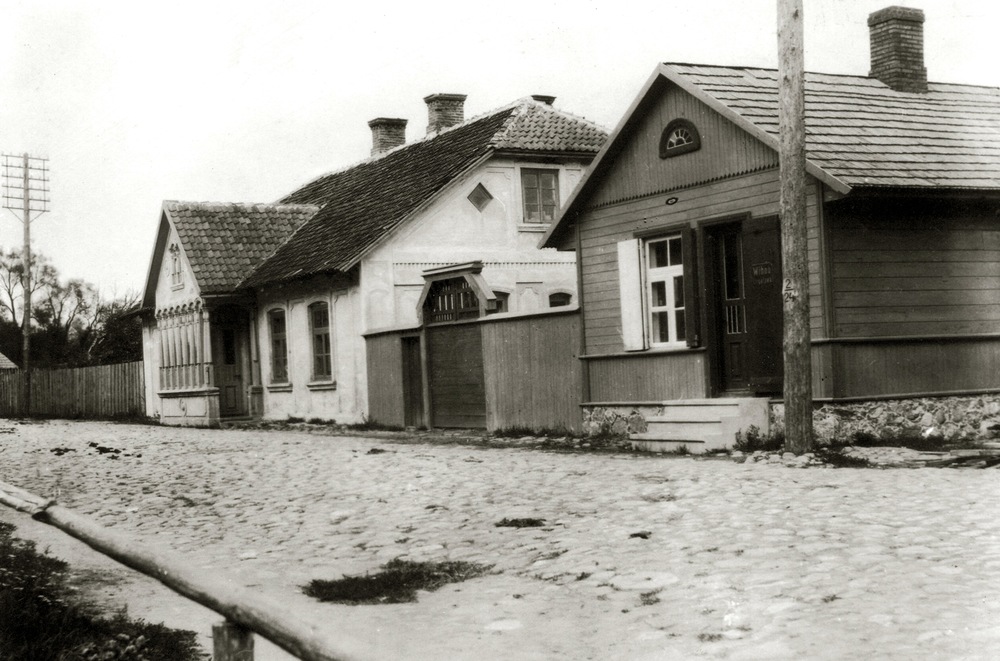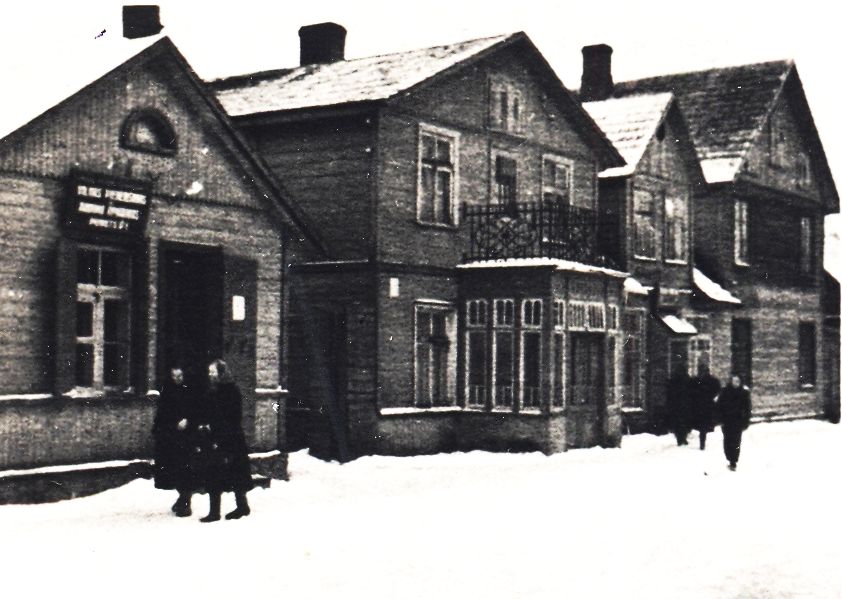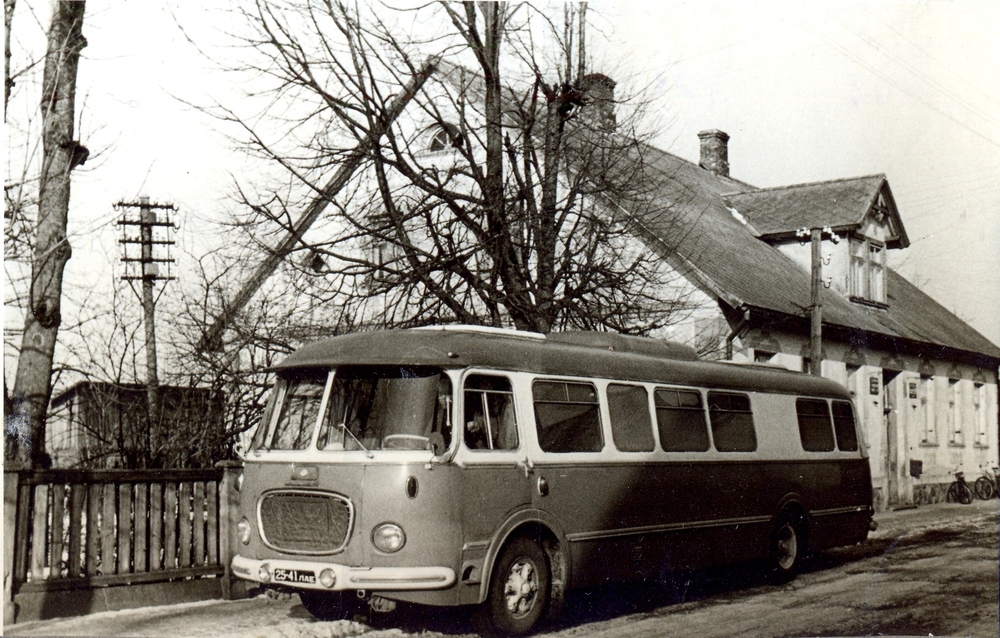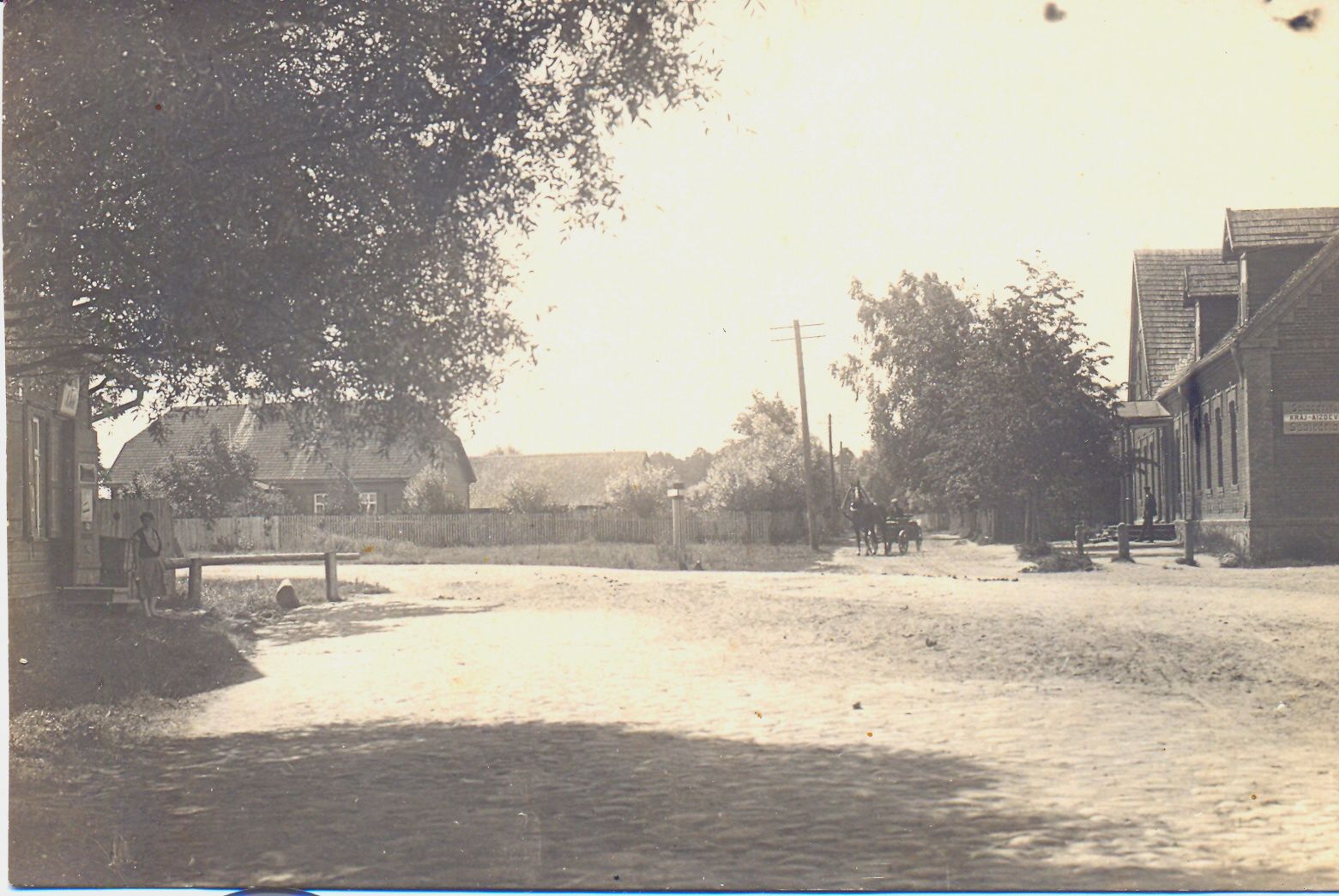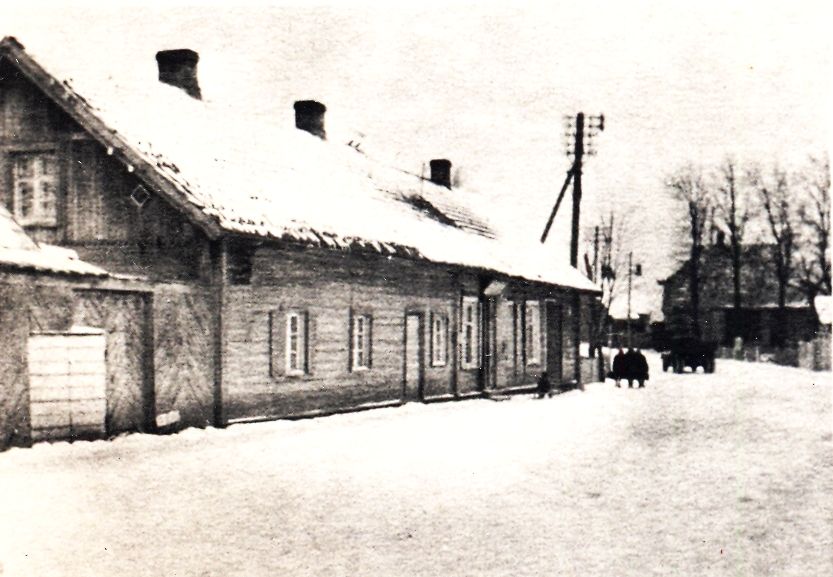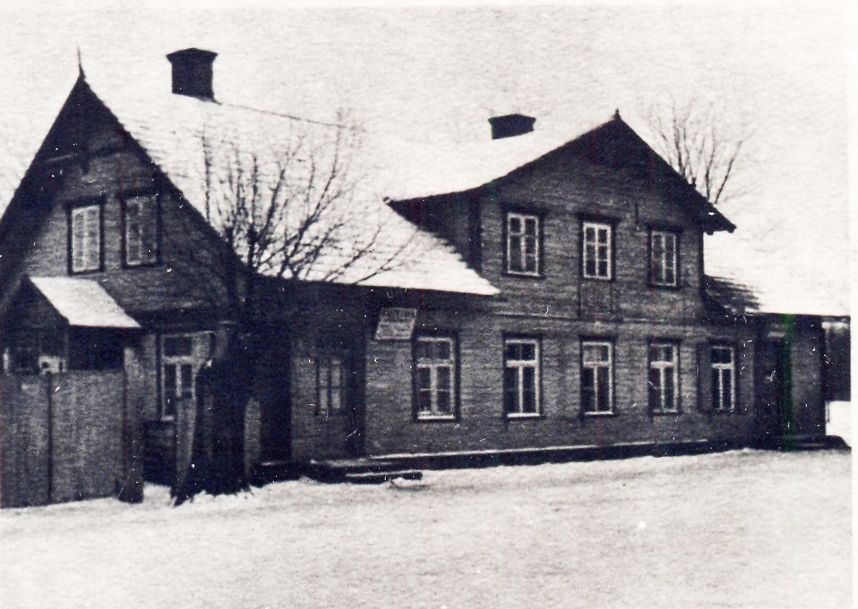At the turn of 19th and 20th century Rigas Street was different from all the other streets of Salacgriva. It was paved. It was the central street of the village and it remained as such when Salacgriva became a town. Rigas Street in its northern part started at the ferriage then after some time at the timber bridge and making loops stretched south-eastwards where it merged with Vidzemes Street and ended at the Medical Practice. The street hosted the town council or as it was called a civil parish house, Svetciems corporate event house, a pharmacy, the post and telegraph office, and several stores – a bookshop, a bakery, a café, colonial commodities and off licences.
In summer of 1939 the only paved street got a new and modern surfacing – asphalt. In those times the local inhabitants were especially proud of it.
on August 25, 1939, the Limbazu Vestnesis wrote:
Salacgriva flourishes
Having seen Salacgriva a few years ago and now everyone got impressed the great changes that have taken place here. As to the streets of the town, it was impossible to move ahead along the streets in falls and springs even if one had “Seven-mile-boots”…
Now – not a trace of it. Instead of the unwrought stone pavement of Rigas Street, there is now a motorway with concrete pavements. It is a pleasure for people to have a walk.
The number of the dwelling houses in Salacgriva in 1935 was – 168. 18 of them were made of stone, 143 were made of wood and 7 buildings were made of both stone and wood.
159 houses were single-storey buildings, 9 - two-storey buildings.
The total number of apartments – 287, 15 – a kitchen, 114 – a single room flat, 86 – a double room flat, 45 a three-room flat, 14 – a four-room flat, 4 – a five-room flat, 4 – a six-room flat, 3 an eight-room flat, 1 – a none-room flat, and 1 a ten-room flat.
The number of the apartment that had running water – 1.
Electrical lighting and central heating – absent*.
*A.Maldupa and V. Salna Pilsetu apraksti [The description of the towns]. R.,1936.
The warehouse of the entrepreneurs of Pärnu Smit and Jaksa. The house was built in the second part of the 19th century. Later the house was bought by Salacgriva entrepreneur Robert Ansmidt, and then the village council. The warehouse was used to store grains of farmers and for the purposes of jail. By 1935 the warehouse had already become a fire station. 1939.
Pharmacy’s house at 6 Rigas Street at the beginning of the 20th century. This house with the pharmacy was bought by the pharmacist, the Mayor of Salacgriva Janis Liepins. There pharmacy started its activity in 1880. It has been a BENU pharmacy since 2012. During the soviet times in the apartment of Janis Liepins there was a dispensary on the ground floor and dental offices on the 1st floor. The photo was taken in 1920-1930.







